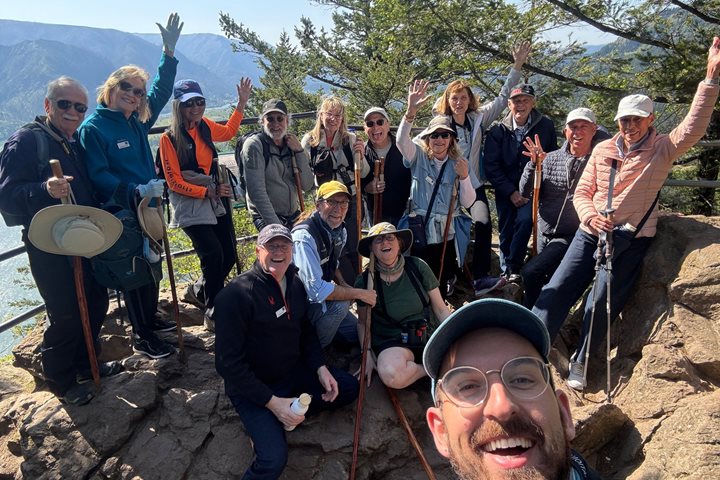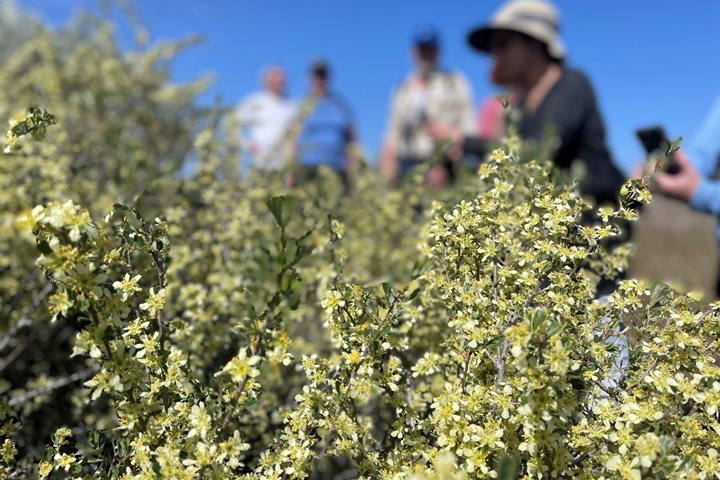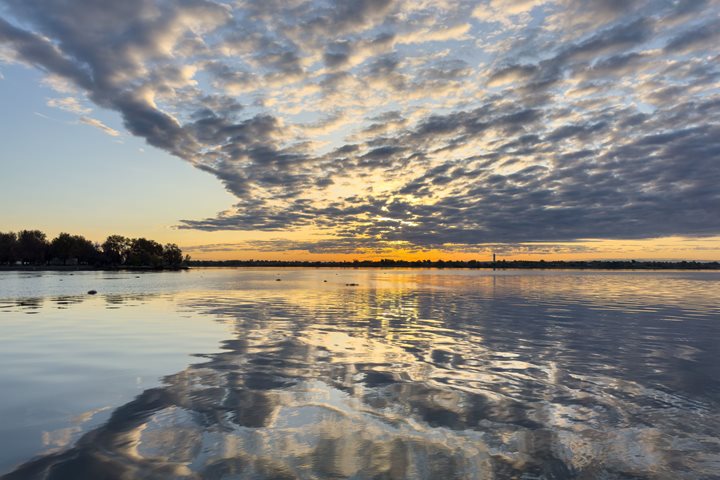Hard to imagine a better day than this! As dawn broke, the National Geographic Sea Lion was at the mouth of the mighty Columbia beneath clear skies with magnificent vistas in every direction. California sea lions lounged in languid repose on nearby buoy channel markers. Blows from a humpback whale punctuated the morning air with a primordial beckoning, providing us with the first hint that this was going to be a most extraordinary day.
After docking in the historic town of Astoria, the first American settlement on the Pacific coast, we traveled south to Fort Clatsop, headquarters of the Lewis and Clark Corps of Discovery during the winter of 1805-06. Walking through the forested lanes put us back in time, recalling those long, grueling months when the Corps was here. But, truth be told, we had to ramp-up our imaginations because our experience, with sunshine streaming through the branches of the towering spruce and cedar trees all around, was far different from the unending rain and gray skies which the Corps experienced when they called this place home.
Next up was our visit to the elevated vantage point of the Astoria Column. Once again, the vistas were astounding in every direction. Several of us were drawn, near the western edge, to the reconstructed burial canoe of Chief Concomly, headman of the Chinook people who befriended Lewis and Clark here two centuries before. With the panorama of the landscape below us, we recalled the “helping hands” of native people who provided vital aid to the Corps at every step of their way across the continent. And we reflected on Concomly’s descendant, US Ambassador Christopher Stevens, an enrolled member of the Chinook tribe, being killed in the raid at Benghazi, Libya, in 2012. Connections of past and present, distant and near.
We devoted our afternoon to an exploration of Cape Disappointment which (to say the least) was no disappointment! The Lewis and Clark Interpretive Center is a gem of historical presentation and, once again, the views out across the sun-drenched Columbia River Bar were absolutely breathtaking. We ended the day with a reflective stroll through the Confluence Project, an installation by famed designer Maya Lin, asking us to “re-imagine” the Lewis and Clark Expedition, challenging us to see that experience with binocular vision, through the lens of the native people as well as that of the Corps.
To sum up this extraordinary day, no words are more fitting than those of William Clark who was more thrilled than even we to gaze out from the continent’s edge toward the sea beyond: “Ocean in view! O the joy! We are in view of the ocean, this great Pacific Ocean which we have been so long anxious to see.”






